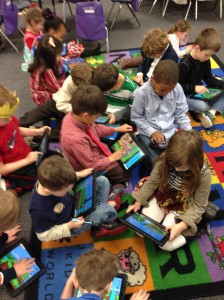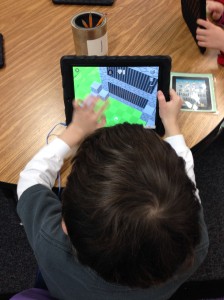Are you a someone who likes to doodle? Do you see animal shapes in clouds, or faces in wood grain? During our COVID shut down, I have had a lot of opportunity to take walks and look at the ordinary in new ways. It’s easy to become a bit stagnant when sitting at home all the time!
Many years ago, I had a kindergarten student who loved a particular Disney princess. She drew that princess every time she had crayons and paper. In fact, when given an activity page, she would transform whatever was on that page into the princess. The one that stands out most in my memory is when we were working on the letter Ww . There was a walrus on the paper and she added big puffy hair, a tiara, and a princess dress to the walrus. While singularly focused on the one character, she certainly demonstrated a lot of creativity in transforming regular objects into the princess.
Young children have the unique ability to imagine, pretend, and create. They can make trucks and trains out of boxes, pencils, and blocks. They can transform their imaginary world without much guidance or even encouragement. However, we can channel this creativity to enhance their learning in a variety of ways with tools readily available. Through using the camera on the iPad, students can take ordinary photos and transform them into characters using the Markup tool in the photo editor.
If you need a little help getting started, I created an interactive, downloadable Pages template here. For more photo character activities, my good friend and colleague Marc Faulder, created the book Raindrop, in which ordinary raindrop photos are transformed into characters. Students can create speech bubbles and a comic using their raindrop characters.
I would love to see what characters your students (or your own children) are creating!



 Book Cover
Book Cover  Learning Journal Cover
Learning Journal Cover




















